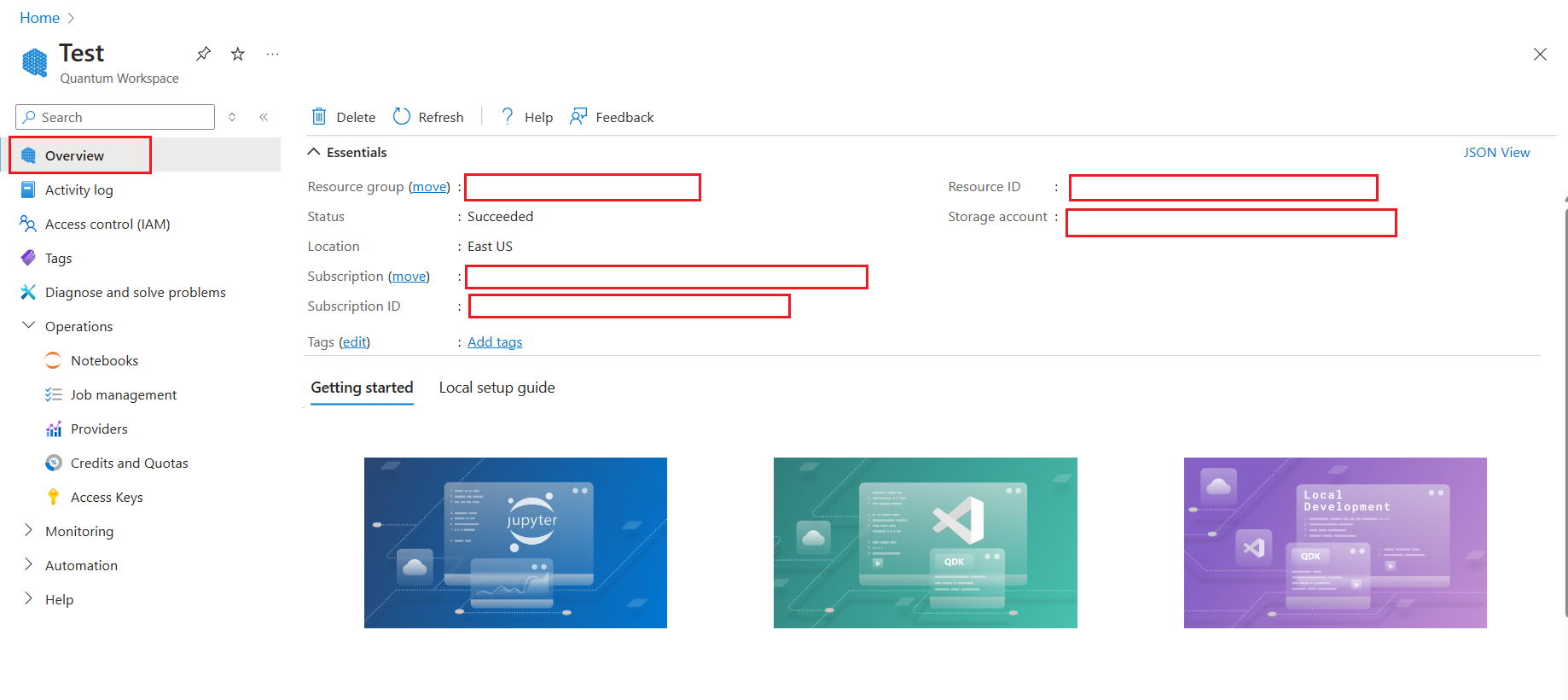How to adapt Qiskit samples to run on Azure Quantum
If you have some experience with quantum computing or are just starting, it's likely that you use some samples from Qiskit.org. This article shows you how to adapt any Qiskit sample to run against any of the Azure Quantum backends.
Prerequisites
- An Azure account with an active subscription. If you don't have an Azure account, register for free and sign up for a pay-as-you-go subscription.
- An Azure Quantum workspace. See Create an Azure Quantum workspace.
Copy the Qiskit sample in Azure Quantum portal
First, you need to copy the Qiskit sample to an Azure Quantum notebook.
- Log in to the Azure portal and select your Azure Quantum workspace.
- In the left blade, select Notebooks and click My Notebooks.
- Click Upload New if you want to upload a sample, or click Add New to copy the code to a new notebook.
Locate the default backend
Most samples are configured to run by default against the aer_simulator, which is a great way to get started.
- Locate the cell that has a line that defines the backend, for example,
backend = Aer.get_backend('aer_simulator'). - Comment out that line, that is,
# backend = Aer.get_backend('aer_simulator').
Create an Azure Quantum backend
Now you need to create a backend that points to an Azure Quantum provider.
Click + Code to add a new code cell before the code sample cell.
Create a list of Azure Quantum backends. The following code creates a
workspaceobject with the information of your Azure Quantum workspace and configures a list of Azure Quantum backends from all the providers available in your Azure Quantum workspace.import azure.quantum from azure.quantum.qiskit import AzureQuantumProvider workspace = Workspace( resource_id = "", # Add the resourceID of your workspace location = "" # Add the location of your workspace (for example "westus") ) provider = AzureQuantumProvider(workspace) # Create IonQ simulator and QPU backends ionq_simulator_backend = provider.get_backend("ionq.simulator") ionq_qpu_backend = provider.get_backend("ionq.qpu.aria-1") # Create Rigetti simulator backend rigetti_simulator_backend = provider.get_backend("rigetti.sim.qvm") # Create Quantinuum simulator and QPU backends quantinuum_simulator_backend = provider.get_backend("quantinuum.sim.h1-1e") quantinuum_qpu_backend = provider.get_backend("quantinuum.qpu.h1-1")Note
The location and resource ID of your workspace can be found in the Overview tab of your Azure Quantum workspace.

- Click + Code to add a new code and add the backend to the sample. Replace the
backendvariable with the Azure Quantum backend you want to use. For example, to use the IonQ simulator, usebackend = ionq_simulator_backend.
# Set your backend of choice backend = ionq_simulator_backendNote
Azure Quantum defaults to QIR for the backends. If you need to use a passthrough backend, use the
gatesetparameter with theget_backendmethod. For more information, see Native gates support and usage.- Click + Code to add a new code and add the backend to the sample. Replace the
Run the sample on Azure Quantum
Click on Run all on the top left of the notebook and verify that you have jobs being queued under Job management.